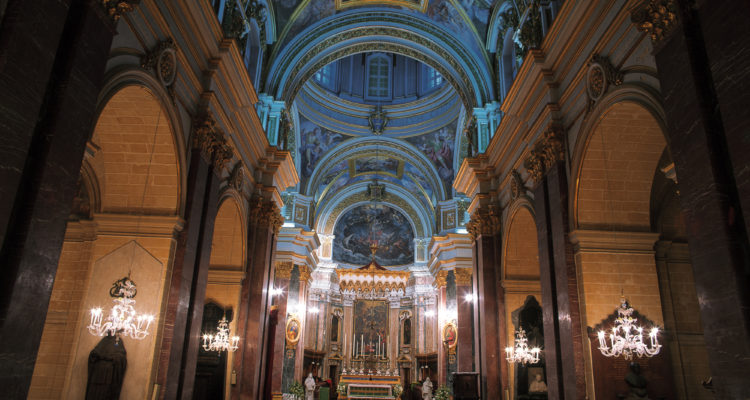Malta's deep Christian roots span back to A.D. 60 when none other than the Apostle Paul himself shipwrecked on the island.
Paul was on his way to Rome, where he was being tried as a political rebel when the ship he was traveling on faced a severe storm and ultimately wrecked two weeks later. All passengers were able to swim safely to land to the location that is now known as St Paul's Island. St Luke describes their welcoming in the Acts of the Apostles by saying,
"And later we learned the island was called Malta. And the people who lived there showed us great kindness, and they made a fire and called us all to warm ourselves."
During their time by the fire, Paul was bitten by a poisonous snake but was not harmed. Because he did not grow ill, the people considered it a sign and deemed him to be a special man. This event has been painted numerous times in religious artwork on the island.
Paul took refuge in what is now known as St. Pauls Grotto in Rabat, Malta.
The first Bishop of Malta
During his stay in Malta, Paul was invited to the house of Publius, who at the time was Roman's chief man on the island. While Paul was there, Publius' father had a severe fever, and Paul healed him of it. Because of this, the man converted to Christianity and became the first Bishop of Malta. Now, in the place of his house, stands the Cathedral of Mdina.
Now, archaeological evidence shows that Malta was one of the first Roman colonies to convert to Christianity.
Christianity continues to be a significant influence on the country of Malta as there are over 365 churches on the island. Each village has at least one church that celebrates with a Festa each year.
Every year on February 10th, the island celebrates with what they call San Pawl Nawfragu, or the Feast of St. Paul's Shipwreck. It is a public holiday celebrated with family, religious ceremonies and processions and kicks off the first feast of the year.



